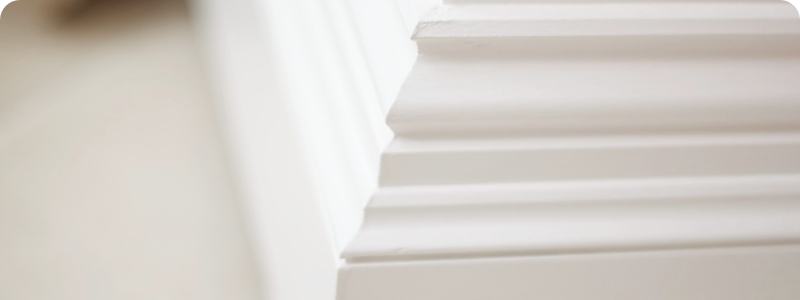
Installing skirting board on your walls is a relatively simple and low hassle DIY procedure, which can make an incredible impact on the appearance of your room as a whole. A good skirting board setup has the potential to create a brilliant, tidy, well-kept impression almost all by itself.
So without further ado, here is a simple run-through of the process of doing your own skirting board installation:
Note: As with all DIY jobs, proper measurement is indispensable. You’ve probably all heard the tradesmen’s motto of “measure twice, cut once”, and for good reason. Cutting corners or being overly hasty when taking measurements can lead to your entire project being scuppered and valuable materials being lost.
- Pick a section of the wall which has an external corner, place a piece of skirting against it so that it protrudes past the corner, and use a pencil to mark the line of the skirting board on the floor.
- Do the same for the adjacent wall, and mark it in the same way across the floor. At this point you should have two intersecting lines. Measuring the distance up to this intersecting point will show you which length of skirting you will need.
- Assuming that you will be fixing your skirting into studwork, you should locate the timber uprights at this point and mark (on the floor) where the different studs are located.
- Measure the length of your first piece of skirting against the wall, and use the marked off point on the floor to determine where to cut. Use a 45 degree bevel saw and cut the skirting board accordingly, being careful not to make any mistakes.
- Place the skirting board into place against the wall, and then mark the locations of the studs on the board itself.
- Next, you’ll want to drill pilot holes through the skirting board and into the studs – preferably using a countersink to bore in the rest of the way so that the screws will sit flat in the board without protruding.
- Repeat the same process for the adjoining piece of skirting. (If the two joints don’t align properly, alter your plane until you can get them flush.)
- Gently brush wood glue across the connecting point between the two boards, and secure it firmly into place. Drill and screw it in as previously described.
- For internal angles, cut the piece of skirting down to length and cut a 45 degree bevel with a mitre saw. Use a coping saw for any fine adjustments inside the profile of the skirting.
- Repeat the above processes for the entire room, and then fill in the screw holes in the skirting with wood filler. After this point you can feel free to paint over the boards .